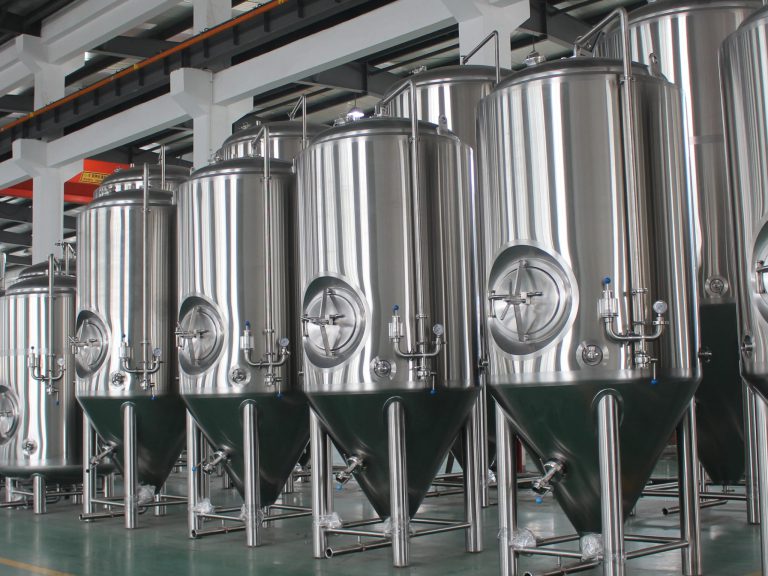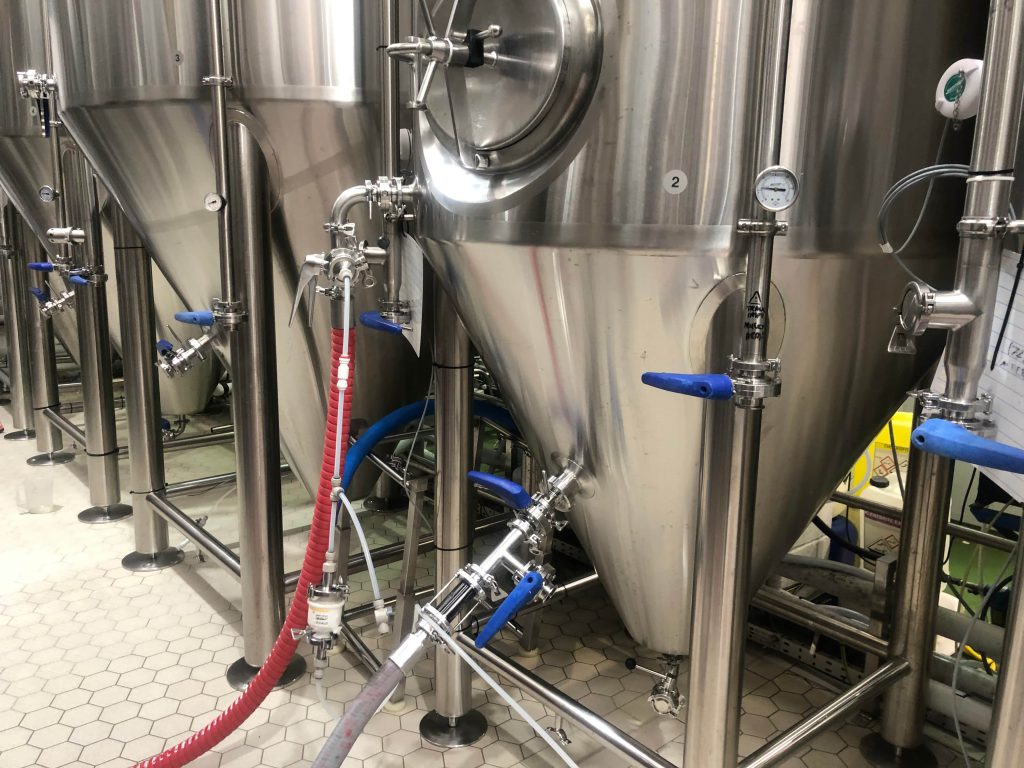Introduction

In recent years, the craft beer industry has witnessed remarkable growth, characterized by an increasing number of breweries and a diverse range of beer styles. Central to this industry are brewing tanks, essential equipment that facilitates the transformation of raw ingredients into the flavorful beverages enjoyed by consumers worldwide. This blog delves into the intricacies of brewing tanks, their various types, functions throughout the brewing process, and their critical role in ensuring the quality and consistency of craft beer.
Types of Brewing Tanks
Brewing tanks encompass several types, each tailored to perform specific functions essential to the brewing process. These tanks are designed to handle different stages of beer production, from mashing to conditioning and packaging.
Mash Tun: The mash tun is where the brewing process begins, as milled malted barley is mixed with hot water to extract fermentable sugars. This crucial step, known as mashing, involves enzymatic reactions that break down starches into simpler sugars suitable for fermentation.
Fermentation Tank: Following mashing, the wort (liquid extracted from the mash tun) is transferred to fermentation tanks. Here, yeast is introduced, initiating the fermentation process where sugars are converted into alcohol and carbon dioxide. Fermentation tanks are equipped with temperature control mechanisms to maintain optimal conditions for yeast activity, crucial for achieving desired flavors and alcohol content.
Conditioning Tank: After fermentation, beer undergoes conditioning in specialized tanks where it matures and clarifies. This phase allows flavors to develop further while unwanted compounds settle out, enhancing the beer’s overall quality and stability. Conditioning tanks are also where carbonation is carefully controlled, ensuring the beer achieves the appropriate level of fizziness before packaging.
Bright Beer Tank: The final stage before packaging involves transferring the conditioned beer to bright beer tanks. Here, the beer undergoes final adjustments in carbonation and clarity, achieving the desired brightness and ensuring consistency across batches. Bright beer tanks are often pressurized to maintain carbonation levels and prevent oxidation, preserving the beer’s freshness until it reaches consumers.
Functions of Brewing Tanks
Brewing tanks come in several types, each serving a specific purpose in the brewing process. Understanding these types is essential for optimizing production and maintaining quality.
| Tank Type | Description |
|---|---|
| Mash Tun | Used for mashing, where hot water is mixed with malt to extract sugars. |
| Fermentation Tank | Primary vessel where yeast converts sugars into alcohol and carbon dioxide. |
| Conditioning Tank | Where the beer matures, carbonates, and clarifies before packaging. |
| Bright Beer Tank | Used for final conditioning and carbonation before beer is kegged or bottled. |
Importance of Brewing Tanks in Quality Control

The quality of craft beer hinges significantly on the design and functionality of brewing tanks. Factors such as tank material, size, and technological features play pivotal roles in determining the final product’s flavor, aroma, and appearance. Stainless steel is the material of choice for brewing tanks due to its durability, resistance to corrosion, and ease of cleaning, all critical for maintaining sanitary conditions and product integrity.
Conclusion
Brewing tanks are not merely vessels; they are fundamental to the craft beer production process, shaping the taste, aroma, and consistency of the final product. As the craft beer industry continues to evolve and innovate, understanding the role of brewing tanks becomes increasingly important for brewers aiming to meet consumer demand for high-quality, distinctive beers. By mastering the intricacies of brewing tanks and selecting equipment that aligns with their brewing goals, craft brewers can elevate their craft and contribute to the vibrant diversity of the craft beer landscape.
FAQ
Q: What material are brewing tanks typically made of?
A: Brewing tanks are predominantly made of stainless steel due to its durability, non-reactive properties, and ease of cleaning, which are essential for maintaining sanitary conditions in breweries.
Q: How do fermentation tanks differ from conditioning tanks?
A: Fermentation tanks are primarily used for the initial fermentation process, converting sugars into alcohol, while conditioning tanks focus on maturation, clarification, and carbonation of the beer before packaging.
Q: What size of brewing tank should I choose for a small craft brewery?
A: The choice of tank size depends on production volume and brewery goals. Small craft breweries often start with 7 to 10-barrel systems, allowing flexibility for growth and experimentation with different beer styles.
Q: How can I optimize cleaning and sanitation of brewing tanks?
A: Regular cleaning and sanitation protocols are crucial for brewing tanks to prevent contamination and maintain beer quality. Using appropriate detergents and sanitizers and ensuring tanks are designed with easy access for cleaning can help optimize brewery hygiene.
